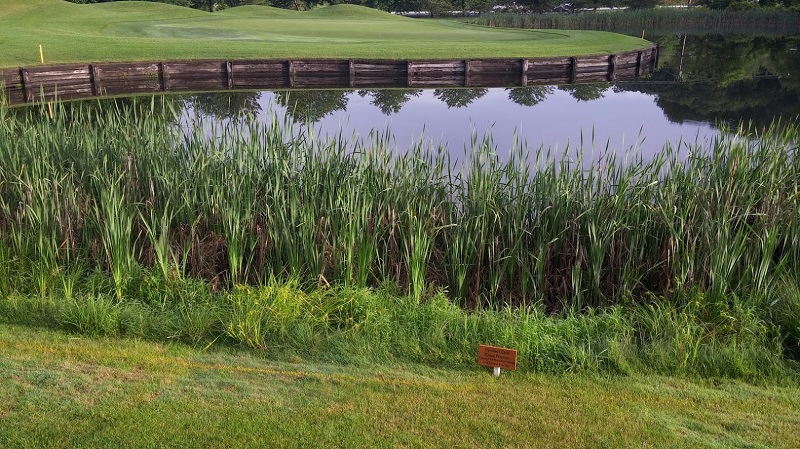Most golf courses plan their lakes and water hazards to be a part of the stormwater control and treatment system. However, natural waters of the state cannot be considered treatment systems and must be protected. Lakes and ponds may also be used as a source of irrigation water. Therefore, it is important to consider these functions when designing and constructing the ponds. Peninsular projections and long, narrow fingers may prevent mixing. Ponds that are too shallow may reach high temperatures, leading to low oxygen levels and promoting algal growth and excess sedimentation
The management of lakes and ponds should include a clear statement of goals and priorities to guide the development of the BMP necessary to meet those goals. Some of the challenges facing superintendents in maintaining the quality of golf course ponds are as follows:
- low dissolved oxygen (DO) levels
- sedimentation
- changes in plant populations
- nuisance vegetation
- maintenance of littoral shelves
- vegetation on the lakeshore
Nutrient enrichment from nitrogen, phosphorus, and sediments in surface water runoff can increase the growth of aquatic plants, algae, and bacteria in ponds. Therefore, an important BMP is to maintain a riparian buffer around surfaces waters to filter the nutrients and sediments in runoff. By regulation, fertilizers cannot be applied within 15 feet of waterways. This setback is reduced to 10 feet if a drop spreader, rotary spreader with deflector, or targeted spray liquid is used to apply fertilizer. Other management practices, such as establishing a special management zone around pond edges, can assist in efforts to prevent nutrient enrichment and sedimentation.
Best Management Practices
- Maintain a riparian buffer to filter the nutrients and sediment in runoff.
- Reduce the frequency of mowing at the lake edge. Collect clippings or direct them to upland areas.
- Maintain the required setback distance when applying fertilizers near waterways.
- Encourage clumps of native emergent vegetation at the shoreline.
- Maintain water flow through lakes if they are interconnected.
- Establish wetlands where water enters lakes to slow water flow and trap sediments.
- Maintain appropriate erosion and sedimentation controls on projects upstream to prevent sedimentation and nutrient enrichment.
- Manipulate water levels to prevent low levels that result in warmer temperatures and lowered DO levels.
- Aerate ponds. Dredge or remove sediment before it becomes a problem.

Maintaining riparian buffers around waterbodies protects water quality. Photo credit: Chris Harriman.
Next: Dissolved Oxygen

